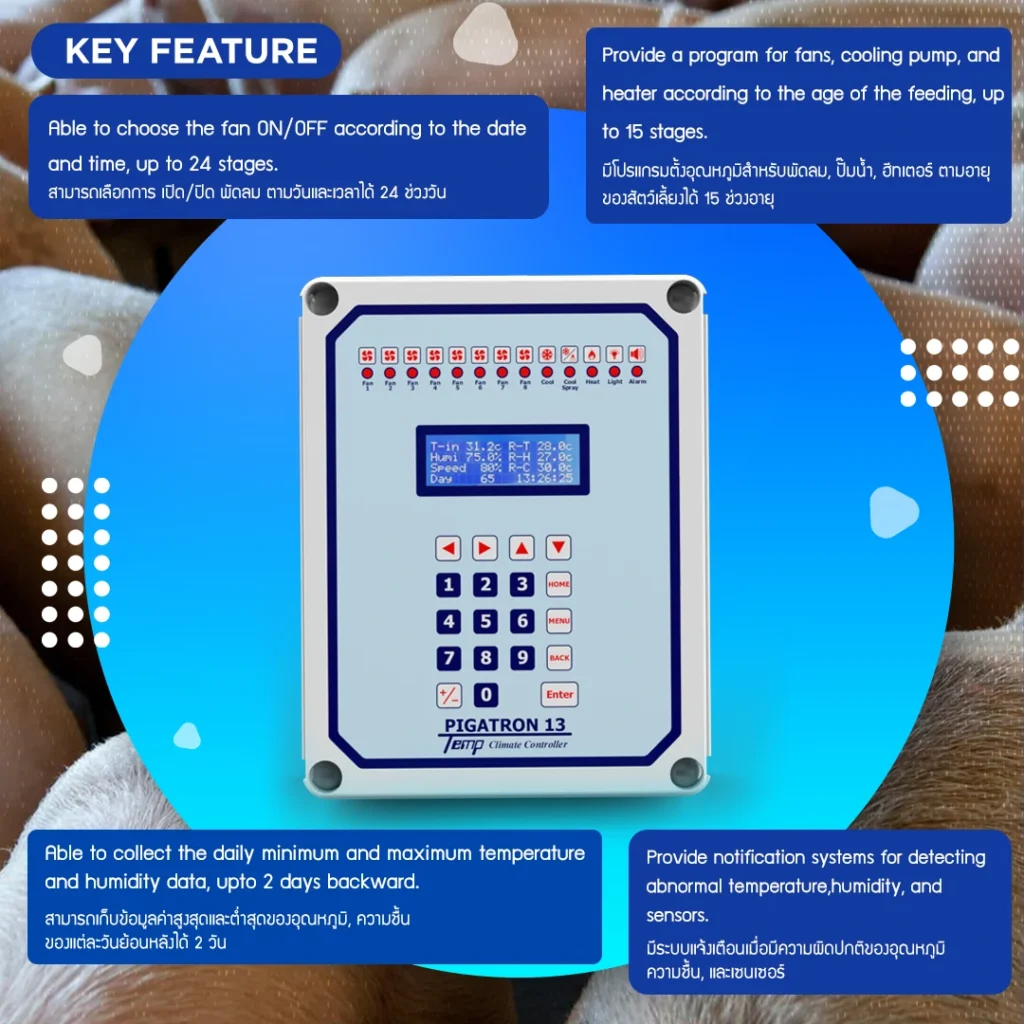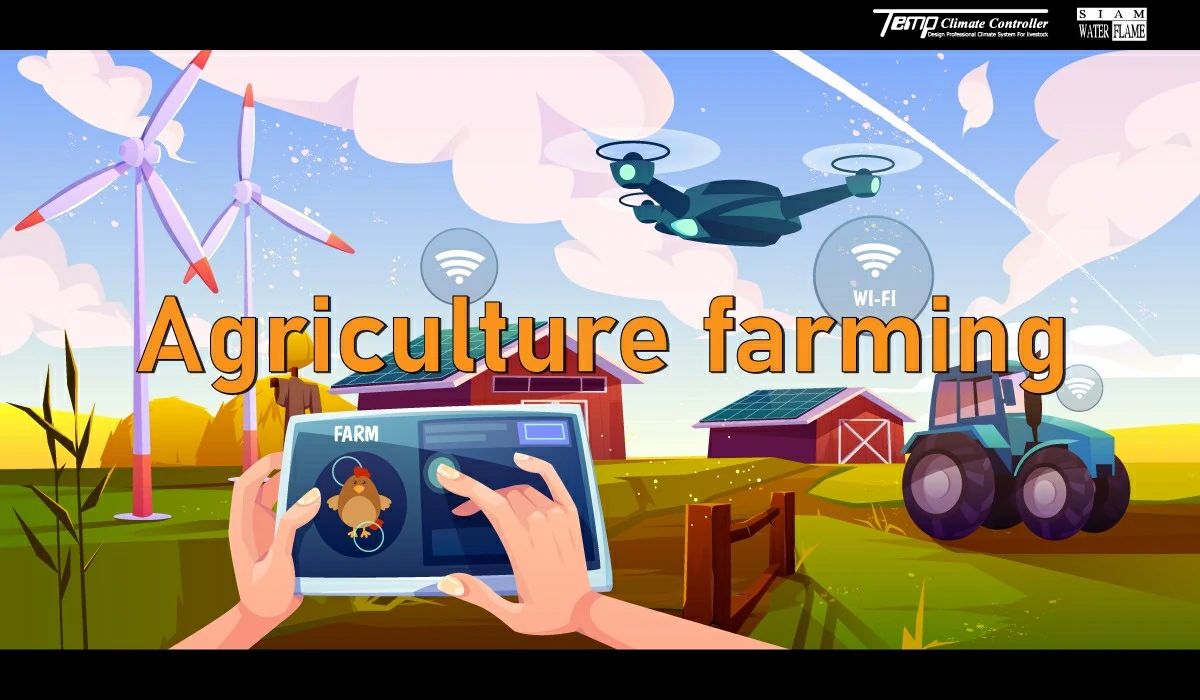Swine Product Situation and Trend in 2023
by the Office of Agricultural Economics
Trend for 2023
of the world
Production
In 2023, the world’s pork production is expected to reach 110.98 million tons, an increase of 1.03 percent from 109.85 million tons in 2022 due to China, a major swine producing country. recovering from ASF damage and being able to increase production It is expected to have a production volume of 52.00 million tons, an increase of 1.96 percent from 51.00 million tons in 2022,
including the United States, Brazil and Mexico expanding production according to domestic demand and increased exports from economic recovery. economy The production volume is expected to increase from 2022 by 0.72 percent, 1.61 percent and 4.58 percent, respectively. Important agricultural situation and trends in 2023
Marketing
Consumption demand
In 2023, the world’s pork consumption is expected to be 110.02 million tons, an increase of 1.24 percent from 108.68 million tons in 2022, because the world’s major pork consuming countries are China, the United States, and the European Union. There will be an increase in pork consumption from 2022 by 1.68 percent, 1.87 percent and 0.26 percent, respectively.

Export
In 2023, the world’s pork exports are expected to total 10.50 million tons, a decrease of 1.59 percent from 10.67 million tons in 2022, because the world’s major pork exporting countries will have a decrease in export volume. especially the European Union It is expected that there will be 3.76 million tons of pork exports
Import
In 2023, it is expected that the world’s pork imports will have a total volume of 9.55 million tons, down from 9.60 million tons in 2022 by 0.55% because the world’s major pork importing countries will have lower imports, especially China.
The volume of pork imports is 1.70 million tons, down from 1.80 million tons in 2022, 5.56 percent, followed by Japan with an import volume of 1.50 million tons, down from 1.53 million tons in 2022,
the Philippines is expected to import pork down 18.18 percent compared to 2022 due to the temporary expiration of pork import tax cuts to resolve the problem. Swine shortage due to AFS outbreak
of Thailand
Production
In 2023, the production of pigs is expected to be 17.47 million heads, an increase of 12.66 percent from 15.51 million heads in 2022, due to the increasing number of sows sows will be able to expand their pig production.
Marketing
Consumption demand
In 2023, swine consumption is expected to be 1.30 million tons, an increase of 12.58 percent from 1.15 million tons in 2022 due to economic recovery. especially in the tourism and service sectors This will result in an increase in demand for pork consumption from the previous year.
Export
In 2023, it is expected that the export of chilled, frozen and processed pork will increase slightly or close to 2022 due to economic recovery, especially in the food industry of trading partner countries,
Import
In 2023, imports of pork products and other edible parts of pigs (skin, liver and other offal) are expected to be similar to 2022.
Price
In 2023, it is expected that the price of swine that farmers can sell will be stable or slightly lower compared to 2022 due to the expected increase in swine production. in line with increasing consumer demand Export prices of slaughtered pork and processed pork are

Expected to be close to 2022.
Factors affecting production or export
Swine Plague Although at present pig farm management is more efficient and able to control epidemics better. However, there are still risk factors for swine epidemics such as Porcine Epidemic Diarrhea (PED), Porcine Reproductive and Respiratory Syndrome (PRRS), and African Cholera. African Swine Fever (ASF), etc. Improving farm biosecurity for disease surveillance and disease prevention has resulted in higher production costs for farmers. In addition,
Thailand has not been certified to be free of FMD disease, thus limiting the export of slaughtered pork and processed pork abroad.
Rising production costs especially the cost of animal feed, energy and biosecurity. While pork is a product that has price control measures. Therefore, it may affect the farmers’ decision to return to raising pigs.
The economic recovery after the COVID-19 pandemic has resulted in an increase in domestic and international demand for swine. This is a positive factor that will motivate farmers to increase the amount of swine production in line with market demand.
Data source :: Swine product situation and trend in 2023 (swinethailand.com)
Swine Product Situation and Trend in 2023
by the Office of Agricultural Economics
Trend for 2023
of the world
production
In 2023, the world’s pork production is expected to reach 110.98 million tons, an increase of 1.03 percent from 109.85 million tons in 2022 due to China, a major swine producing country. recovering from ASF damage and being able to increase production It is expected to have a production volume of 52.00 million tons, an increase of 1.96 percent from 51.00 million tons in 2022, including the United States, Brazil and Mexico expanding production according to domestic demand and increased exports from economic recovery. economy The production volume is expected to increase from 2022 by 0.72 percent, 1.61 percent and 4.58 percent, respectively. Important agricultural situation and trends in 2023
marketing
consumption demand
In 2023, the world’s pork consumption is expected to be 110.02 million tons, an increase of 1.24 percent from 108.68 million tons in 2022, because the world’s major pork consuming countries are China, the United States, and the European Union. There will be an increase in pork consumption from 2022 by 1.68 percent, 1.87 percent and 0.26 percent, respectively.
Export
In 2023, the world’s pork exports are expected to total 10.50 million tons, a decrease of 1.59 percent from 10.67 million tons in 2022, because the world’s major pork exporting countries will have a decrease in export volume. especially the European Union It is expected that there will be 3.76 million tons of pork exports, down from 3.90 million tons in 2022 by 3.59 percent, followed by the United States with an export
import
In 2023, it is expected that the world’s pork imports will have a total volume of 9.55 million tons, down from 9.60 million tons in 2022 by 0.55% because the world’s major pork importing countries will have lower imports, especially China. The volume of pork imports is 1.70 million tons, down from 1.80 million tons in 2022, 5.56 percent, followed by Japan with an import volume of 1.50 million tons, down from 1.53 million tons in 2022, 1.64 percent, and Mexico will have a volume of 1.50 million tons. Imports were 1.24 million tonnes, down 0.80 percent from 1.25 million tonnes in 2022. In addition, the Philippines is expected to import pork down 18.18 percent compared to 2022 due to the temporary expiration of pork import tax cuts to resolve the problem. Swine shortage due to AFS outbreak
of Thailand
production
In 2023, the production of pigs is expected to be 17.47 million heads, an increase of 12.66 percent from 15.51 million heads in 2022, due to the increasing number of sows sows will be able to expand their pig production. However, farmers are still concerned about the risk of disease outbreaks in swine. and increased production costs from biosecurity systems. Biosecurity affects farmers’ decision to return to raising pigs.
marketing
consumption demand
In 2023, swine consumption is expected to be 1.30 million tons, an increase of 12.58 percent from 1.15 million tons in 2022 due to economic recovery. especially in the tourism and service sectors This will result in an increase in demand for pork consumption from the previous year.
Export
In 2023, it is expected that the export of chilled, frozen and processed pork will increase slightly or close to 2022 due to economic recovery, especially in the food industry of trading partner countries, while exports of live pigs are expected to stabilize.
import
In 2023, imports of pork products and other edible parts of pigs (skin, liver and other offal) are expected to be similar to 2022.
price
In 2023, it is expected that the price of swine that farmers can sell will be stable or slightly lower compared to 2022 due to the expected increase in swine production. in line with increasing consumer demand Export prices of slaughtered pork and processed pork are

expected to be close to 2022.
Factors affecting production or export
Swine Plague Although at present pig farm management is more efficient and able to control epidemics better. However, there are still risk factors for swine epidemics such as Porcine Epidemic Diarrhea (PED), Porcine Reproductive and Respiratory Syndrome (PRRS), and African Cholera. African Swine Fever (ASF), etc. Improving farm biosecurity for disease surveillance and disease prevention has resulted in higher production costs for farmers. In addition, Thailand has not been certified to be free of FMD disease, thus limiting the export of slaughtered pork and processed pork abroad.
Rising production costs especially the cost of animal feed, energy and biosecurity. While pork is a product that has price control measures. Therefore, it may affect the farmers’ decision to return to raising pigs.
Data source :: Swine product situation and trend in 2023 (swinethailand.com)
Swine Product Situation and Trend in 2023
by the Office of Agricultural Economics
Trend for 2023
of the world
production
In 2023, the world’s pork production is expected to reach 110.98 million tons, an increase of 1.03 percent from 109.85 million tons in 2022 due to China, a major swine producing country. recovering from ASF damage and being able to increase production It is expected to have a production volume of 52.00 million tons, an increase of 1.96 percent from 51.00 million tons in 2022, including the United States, Brazil and Mexico expanding production according to domestic demand and increased exports from economic recovery. economy The production volume is expected to increase from 2022 by 0.72 percent, 1.61 percent and 4.58 percent, respectively. Important agricultural situation and trends in 2023
marketing
consumption demand
In 2023, the world’s pork consumption is expected to be 110.02 million tons, an increase of 1.24 percent from 108.68 million tons in 2022, because the world’s major pork consuming countries are China, the United States, and the European Union. There will be an increase in pork consumption from 2022 by 1.68 percent, 1.87 percent and 0.26 percent, respectively.

Export
In 2023, the world’s pork exports are expected to total 10.50 million tons, a decrease of 1.59 percent from 10.67 million tons in 2022, because the world’s major pork exporting countries will have a decrease in export volume. especially the European Union It is expected that there will be 3.76 million tons of pork exports, down from 3.90 million tons in 2022 by 3.59 percent, followed by the United States with an export volume of 2.85 million tons, down from 2.90 million tons in 2022 by 1.69 percent and Canada exported 1.40 million tons, down from 1.43 million tons in 2022, 1.75 percent.
import
In 2023, it is expected that the world’s pork imports will have a total volume of 9.55 million tons, down from 9.60 million tons in 2022 by 0.55% because the world’s major pork importing countries will have lower imports, especially China.
The volume of pork imports is 1.70 million tons, down from 1.80 million tons in 2022, 5.56 percent, followed by Japan with an import volume of 1.50 million tons, down from 1.53 million tons in 2022, 1.64 percent, and Mexico will have a volume of 1.50 million tons. Imports were 1.24 million tonnes, down 0.80 percent from 1.25 million tonnes in 2022. In addition, the Philippines is expected to import pork down 18.18 percent compared to 2022 due to the temporary expiration of pork import tax cuts to resolve the problem. Swine shortage due to AFS outbreak
of Thailand
production
In 2023, the production of pigs is expected to be 17.47 million heads, an increase of 12.66 percent from 15.51 million heads in 2022, due to the increasing number of sows sows will be able to expand their pig production.
However, farmers are still concerned about the risk of disease outbreaks in swine. and increased production costs from biosecurity systems. Biosecurity affects farmers’ decision to return to raising pigs.
marketing
consumption demand
In 2023, swine consumption is expected to be 1.30 million tons, an increase of 12.58 percent from 1.15 million tons in 2022 due to economic recovery. especially in the tourism and service sectors This will result in an increase in demand for pork consumption from the previous year.
Export
In 2023, it is expected that the export of chilled, frozen and processed pork will increase slightly or close to 2022 due to economic recovery, especially in the food industry of trading partner countries,
while exports of live pigs are expected to stabilize.
This is because neighboring countries have limited demand for live pig imports due to the recovery in production after the outbreak of ASF.
import
In 2023, imports of pork products and other edible parts of pigs (skin, liver and other offal) are expected to be similar to 2022.
price
In 2023, it is expected that the price of swine that farmers can sell will be stable or slightly lower compared to 2022 due to the expected increase in swine production. in line with increasing consumer demand Export prices of slaughtered pork and processed pork are

expected to be close to 2022.
Factors affecting production or export
Swine Plague Although at present pig farm management is more efficient and able to control epidemics better. However, there are still risk factors for swine epidemics such as Porcine Epidemic Diarrhea (PED),
Porcine Reproductive and Respiratory Syndrome (PRRS), and African Cholera. African Swine Fever (ASF), etc. Improving farm biosecurity for disease surveillance and disease prevention has resulted in higher production costs for farmers. In addition, Thailand has not been certified to be free of FMD disease, thus limiting the export of slaughtered pork and processed pork abroad.
Rising production costs especially the cost of animal feed, energy and biosecurity. While pork is a product that has price control measures. Therefore, it may affect the farmers’ decision to return to raising pigs.
The economic recovery after the COVID-19 pandemic has resulted in an increase in domestic and international demand for swine. This is a positive factor that will motivate farmers to increase the amount of swine production in line with market demand.
Data source :: Swine product situation and trend in 2023 (swinethailand.com)













